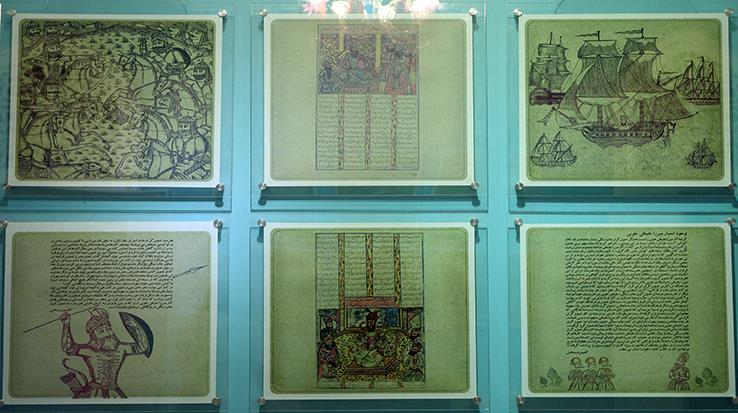Hawzah News Agency-Every sheet of manuscripts available in the Malek National Library and Museum is precious and of exquisite value. We are going to introduce some exquisite and old works of this library that indicate the genuine and oldness of calligraphy art in Iran.
The oldest works
Some parts of Qur’an in Kufic script attributed to Imam Hassan Mujtaba (A.S.) are available in the manuscripts section of the Malek National Library and Museum. Accrediting this attribution, this Qur’an is regarded the oldest work in this section of the library. After this, a version of the book ‘Al-Thamareh’, written in 371 H.A. /981A.D. is the oldest manuscript in the Malek National Library and Museum. This is a translation and explanation made by Abu Ali Hussein ibn-i Abdur-Rahm Sufi Razi to the famous book of Ptolemy. It has 52 sheets of 16 lines inscribed on the Cashmere paper. Khajeh Nasir al-Din Tusi also has added a comment to the book, a comment that smoothed the way of comprehension to Avicenna.
The lasting manuscript of Haj Hussein Malek
Another manuscript in the library is ‘Al-Usul bil-Istiqsat’ from Euclid written in 343 A.H. /954 A.D.; an interesting feature of this section is existence of a manuscript of ‘Diwan-e Safa’ inscribed by handwriting of Haj Hussein Malek himself.
The manuscripts section is mainly assigned to the liberal arts; however, it also encompasses treatises on experimental sciences and medicine. As a rare work, the only Arabic translation of ‘Zakhirehye Kharazmshahi’ also exists in this section.
Ferdowsi’s Shahnameh and Nezami’s Khamseh known as ‘Baysunquri’ manuscript are other exquisites of the library. The latter, known as the oldest Khmaseh manuscript in Iran was written by order of Baysunqur, the Teimuri artist prince, and inscribed by Muhammad ibn-i Mutahhar ibn-i Yusef ibn-i Abi Saeid Qazi Nishaburi in the court of Herat. This manuscript starts with a Shamseh (ornamental loop) that is singular in its kind.
Historical documents
Among the manuscripts available in the Malek National Library and Museum, there are also copies of documents containing for example, free letters, letters, contracts, etc., some written by famous politicians; Nasre al-Din Shah’s handwritings have been arranged into a volume taking more the shape of an album.
The report of Muhammad Mahdi Sharif Kashani from the event of Constitution revolution is another exquisite accredited mainly by its content; this is a significant source in knowing about the great figures of Qajar especially during the Constitution period and afterwards.
A main feature of Malek National Library and Museum is the collection of Qur’ans. There are a total of 42 full versions of holy Qur’an in the Malek complex. Prominent among them is the Qur’an manuscript No.2 inscribed by Sayed Muhammad Baqaye Isfahani that was inscribed for Naser al-Din Shah Qajar in 1299 A.H./1881 A.D.
End.


Your Comment